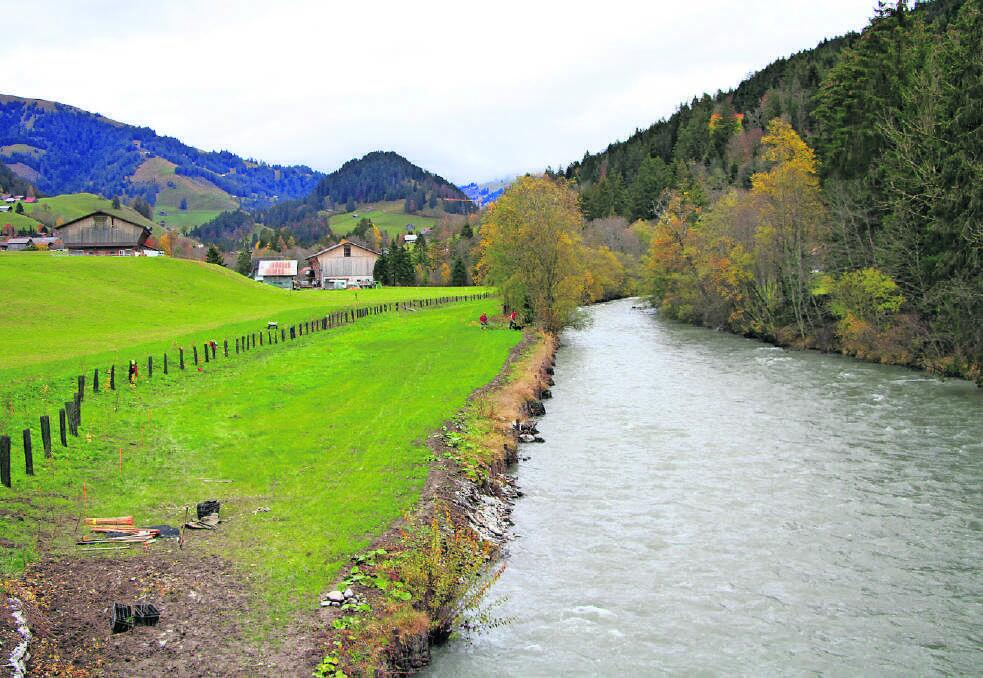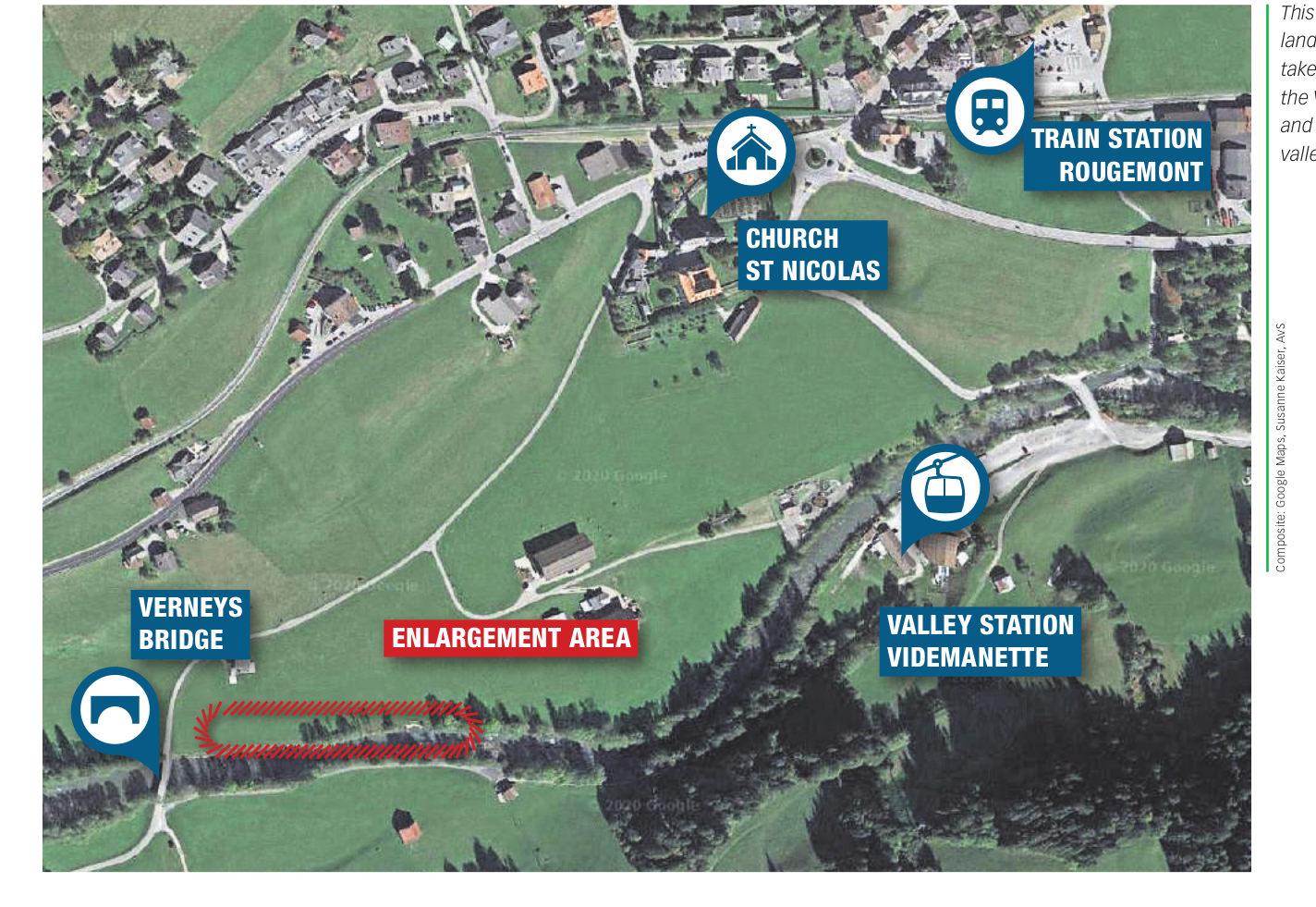Back to its natural width
28.12.2020 Gstaad LivingAt the end of October, part of the right bank of the river Saane at Rougemont was replanted. It was one ore stage in the canton of Vaud’s land restoration project.
Wraped oak trees and willow tree cuttings – between the Verneys bridge in Rougemont and the Videmanette valley station, planting took place at the end of October. In the future a hedge shall act as a natural barrier to the Saane, which is to be widened at this point from currently around 20 metres to 40 to 43 metres.
Stopping erosion
On the right bank of the Saane upstream of the Route des Verneys bridge, the bank is reinforced by gabions (wire baskets filled with stones) over a section of more than 200 metres. These are in poor condition and some have already collapsed. In one spot, a relatively large erosion niche has formed.
A biotope worth protecting
In spring 2016, the Direction Générale de l’Environnement (DGE) commissioned an engineering firm to evaluate erosion control measures on the right bank of the Saane. The measures should also improve the environmental quality of the Saane and ensure compliance with waterbody regulations.
According to the federal and cantonal regulations, the demarcation of an area around a body of water should ensure effective protection against flooding. However, the biological, natural and social functions of water bodies should also be preserved, particularly through land restoration measures.
Restoration means width
The DGE considered a land restoration to be the more sustainable method than the renovation of the existing embankment. Indeed, the Saane near Rougemont used to look very different. On historical maps from 1890, for example, the natural width of the Saane in the area concerned averaged 45 metres. It was a flat area where the river had a strong dynamic and a relatively wide bed with the development of meanders and branches. Then, in the 1950s, sewer works led to the filling up of the area and the subsequent levelling to allow agricultural use.
Now the river’s width should return to almost its historical dimension between 40 and 43 metres. The first stage of the land restoration process was to remove this levelling. In December 2016, for example, boreholes were drilled to determine the type of backfill material.
Inert wastes such as excavated material, rubble, glass bottles, clay tiles or wood and ceramic waste were found. “Fortunately, hazardous waste such as asbestos, fuel, bitumen, electronics, paint or the like was not found,” reports Olivier Stauffer, head of the DGE’s land restoration department. The entire material of the landfill was removed and disposed of professionally.
Natural limit
The plan is to plant a natural barrier, a five metre wide hedge at the limit of the future widened area. Water-loving willows will soon form a stabilising network of roots. A little further out, tall oaks were planted. At the moment the erosion niche is still being provisionally protected with loose stone fill. When the root system of the hedge will be sufficient – in about four years–, the gabions and the protection of the erosion niche will be removed. The watercourse can then spread freely all the way to the hedge.
Riverbed slightly higher
The future enlargement of the Saane will lead to a reduction of the flow rate. This in turn will reduce the transport capacity of solid components such as stones and branches, which will lead to an elevation of the riverbed in this area. This elevation will then lead to an increase of the gradient and thus restore the previous transport capacity of the stream. As regards aquatic fauna, the planned measures will not affect their living conditions or migration.
Avoiding flooding at the Videmanette valley station
To ensure that the rise in the riverbed in the widened area does not lead to a risk of flooding upstream near the treatment plant and the Videmanette valley station, the study proposes to carry out a monitoring every five years on the basis of a cross-sectional profile. If necessary, dredging could then be initiated.
The widening itself and its banks will not require further maintenance, as the natural dynamics of the river will be restored.
BASED ON AVS/SONJA WOLF





